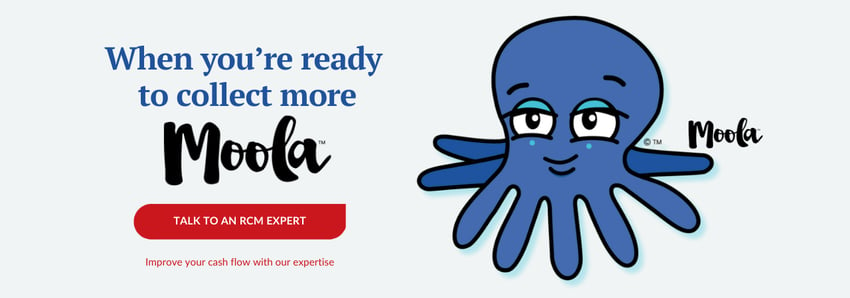DCS Dictionary: Dental Insurance Verification Terms


Dental insurance verification can sometimes feel like the movie Groundhog Day — the same thing happening over and over and over again. The process is so tedious, time-consuming, and repetitive, it can be easy to confuse terms and make mistakes.
But The DCS Dictionary is here to clarify things for you.
At DCS, we’re fluent in the language of insurance verification. As full-service revenue cycle management (RCM) providers, we work with dental businesses of all types, shapes, and sizes to ensure they have a smooth and efficient insurance verification process.
Insurance verification is the first step of the revenue cycle: If you make mistakes during insurance verification, it has a domino effect on the rest of your revenue cycle, creating delays and costing you thousands.
Don’t worry: We’re here to define 7 commonly confused words in the dental insurance verification process.
1. Coverage table vs fee schedule
A coverage table is a list provided by insurance companies that details the percentage of costs they will pay for various dental procedures they cover.
A fee schedule is a listing of fees insurance companies will pay to doctors or other providers/suppliers at the insurer-specified contracted in-network rates.
DCS’ Operations Coordinator, Harry Levy, breaks it down for us.
“Coverage tables show the percentages at which insurance covers procedures. Fee schedules show the dollar amount insurance companies use to cover procedures. Offices tend to focus a lot on coverage tables and very little on fee schedules. Knowing the percentage of coverage is useless unless you know the dollar amount used in the fee schedule for the procedure.”
A coverage table is more general, applying to all dentists, where a fee schedule is a negotiated part of your in-network contract with the insurance company. Where a coverage table is a guide for all, a fee schedule is specific to your dental practice.
It’s best to refer to your fee schedule when it comes to tracking your collections from claims and patients. It’s also wise to renegotiate the fee schedule for your dental business every 1 or 2 years to ensure your rates are favorable.
Related: 3 ways that old or missing fee schedules derail your dental practice
2. Full breakdown vs patient history
A full breakdown is detailed information provided by the insurance company about what is covered under a patient's plan. A patient history is a record of a patient's past dental procedures, claims, and payments.
DCS’ Client Services Representative, Twyla Rogers explains, “A full breakdown with patient history is something that offices, typically, obtain for a new patient or for an existing patient with new insurance.”
She continues, “It entails detailed information such as the patient’s dental history submitted to insurance, clauses, frequency limitations, basic coverage tables, etc. It is absolutely necessary to get this for initial visits to be able to quote the patient accurately for co-pays.”
Both of these documents are needed to create and submit a complete and accurate insurance claim — also known as a clean claim. The full breakdown is crucial to your insurance verification process, to ensure the patient’s coverage is up-to-date.
Your team can use both the full breakdown and the patient history during their patient treatment presentations.
3. Eligibility
Eligibility is confirmation that a patient is qualified to receive benefits under their dental insurance plan. Verifying eligibility is the first step in the billing process, setting the stage for successful claim submissions.
Checking eligibility is a crucial part of insurance verification, because if a patient is not eligible for benefits, their out-of-pocket cost is going to be much higher. This should be part of your team’s treatment presentation, or your patient’s bill will have an unwelcome surprise — and you’ll have an unhappy patient.
Confirming patient eligibility ahead of time is something DCS provides for you before each patient’s day of treatment.
Related: How to correctly calculate your dental patients’ out-of-pocket costs
4. Full write back
A full write back is the process of updating the patient's account with detailed insurance payment information after a claim has been processed by the payer. This is how your team keeps your patients’ information up to date to ensure smooth insurance verification for future treatments.
This is another one of those tedious tasks that dental teams sometimes put on the back burner, which can lead to inaccurate verification in the future and delayed payments — and unhappy patients — down the line.
A full write back also ensures that your practice's records are accurate and that the patient's remaining balance is correct.
5. Annual maximum
An annual maximum is the amount an insurance plan will pay for covered dental services within a given calendar year.
Knowing a patient’s annual maximum is crucial for treatment planning and financial discussions.
For example, when you know a patient’s annual maximum, you are able to spread out their treatment over time to ensure they’re not paying excessive out-of-pocket expenses. You can also use a maximum as a tactic to get more patients into the dental chair before the year is out.
Related: 4 ways to help patients use their dental benefits by end of the year
6. Deductible
A deductible is the amount a patient must pay out-of-pocket before their insurance begins to cover services. This is another term you need to understand during insurance verification, but more specifically for your treatment presentation.
Deductibles directly affect billing, and also the timing of when a patient’s insurance coverage kicks in.
You must account for deductibles when verifying insurance to ensure accurate billing and patient charges.
7. Exclusions and clauses
Exclusions and clauses are specific conditions or services which are not covered by a dental insurance policy. These circumstances where the patient might not receive insurance coverage are specified in their insurance plan.
Unfortunately, most dental patients aren’t familiar with dental insurance. It falls on you and your team to communicate the exclusions and clauses of a patient’s insurance policy during their treatment presentation.
You might be thinking, “How the heck am I supposed to gather all of this information AND put together a treatment presentation for a patient? I’ve already got so much on my plate.”
The solution? Access to a pool of experts who will take insurance verification completely off your plate…
Take advantage of the DCS Knowledge Network to avoid mistakes and collect more
Understanding these terms is not just convenient; it's imperative for the financial success of your practice. An understanding of insurance verification terms will help you and your team avoid mistakes that will decrease your dental business’s profitability.
If this still sounds too overwhelming, you can partner with experts who know all of these terms like the back of their hand.
When you bring in DCS, you access our DCS Knowledge Network: A pool of over 100 experts who specialize in dental revenue cycle management, including insurance verification.
Knowing you have experts dedicated to making your insurance verification process accurate and fast can bring a lot of ease to your stressed dental team.
Don’t let insurance policies overwhelm you or your team. You all have enough on your plate. Schedule a call to access the experts at DCS today.
Related Posts
Dental revenue resources from Dental Claim Support

